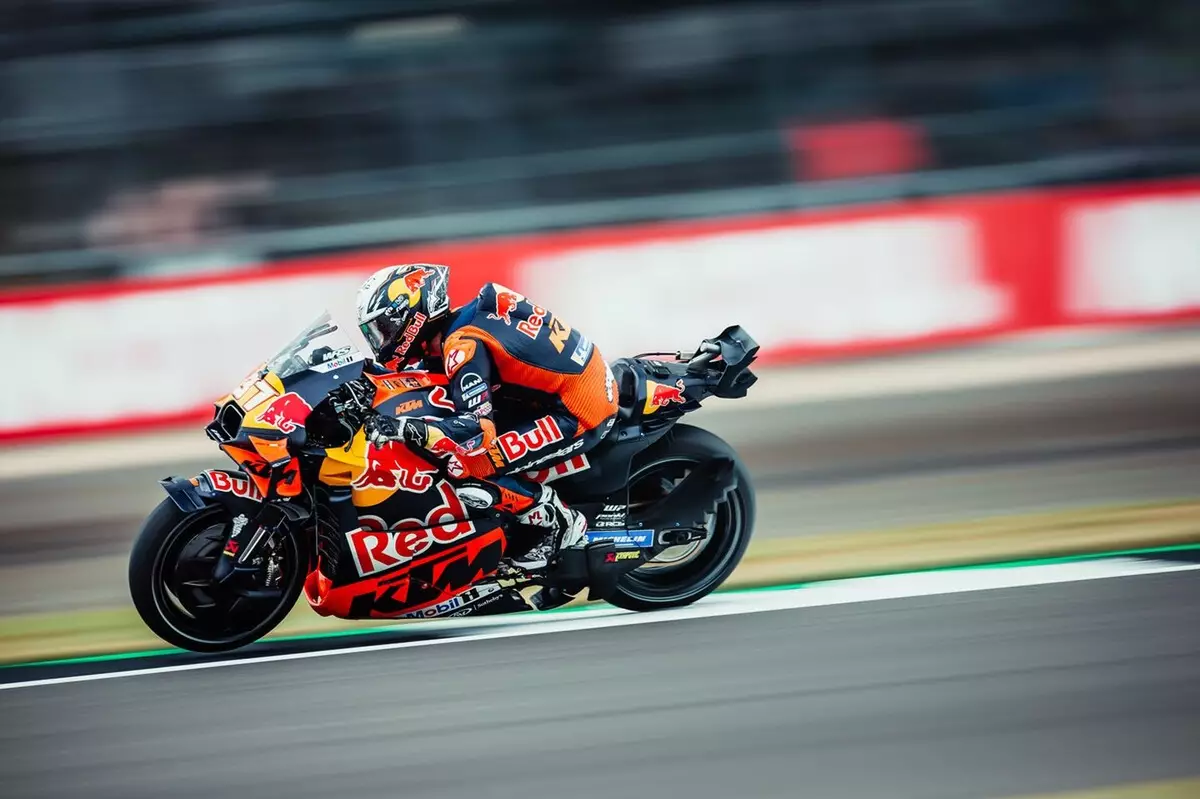As the curtain rises on the 2025 MotoGP season, KTM finds itself trapped in a whirlwind of mixed fortunes. While the Austrian brand has a storied legacy in motorsport, recent performances reflect challenges that extend beyond mere race-day dynamics. The uncertainty surrounding KTM’s participation in the 2027 season looms large, casting shadows over the team’s future strategies and prospects. This environment has led to palpable frustrations among both the team and its riders, most notably exemplified by Pedro Acosta and Brad Binder.
Rider Standings: A Cause for Concern
The current standings tell an unmistakable story; Acosta sits as the highest-scoring KTM rider in ninth place, with Binder trailing in fourteenth. The painful truth is clear: even with promising past performances—like Acosta’s commendable podium finishes in Aragon last year—the trajectory in 2025 does not indicate substantial improvement. Acosta’s cautious outlook towards upcoming races encapsulates a deep-seated awareness of the barriers the team faces. His pragmatic approach includes humility and the acknowledgment of his competitors, underlining an ongoing struggle for supremacy in a fiercely competitive landscape.
As Acosta candidly stated, “First let’s see how we start the weekend because, okay, we made two podiums last year, but Pecco was super-fast in front of me.” His words reflect a reality check for the team; even if past achievements set a benchmark, the present demands more than just recollections of success.
Qualifying Performance: A Critical Review
The angst displayed by Acosta regarding KTM’s qualifying capabilities cannot be overlooked. When he described the performances as “a disaster,” it wasn’t mere exaggeration; it was a sobering reflection of the struggles faced during critical pre-race sessions. His blunt assessment that a position of 12th is unacceptable illuminates a wider issue within the team’s strategy. When the stakes are high, and the competition is fierce, failing to advance beyond initial qualifying rounds severely compromises any chances of securing advantageous race-day positions.
In a highly technical sport like MotoGP, where every fraction of a second counts, such poor showings in qualifying can lead to a cascade of difficulties during the race. The correlation between qualifying and race outcomes cannot be underestimated. Ensuring placement within the top positions in qualifying rounds is as crucial as the performance on race day, emphasizing a fundamental flaw in KTM’s current operational strategy.
Engineering Developments: A Mixed Bag of Potential
KTM’s recent initiative to give their riders a glimpse into future engineering developments also highlights an area of optimism amidst the challenges. Binder’s reflections on the visit to Mattighofen reveal that the team is indeed invested in future growth, suggesting a recognition of its immediate limitations and a vision for evolution. “I know they’re working as hard as they can,” Binder reassured, expressing commendable faith in the engineering group.
This indicates that while the team grapples with current performance issues, there are efforts underway that could eventually lead to breakthroughs. The acknowledgment from Binder about KTM’s focus on enhancing cornering capabilities demonstrates a strategic awareness that only time will tell whether these improvements translate into tangible success on the grid.
The Dilemma of Future Strategies
Nonetheless, the looming question remains whether KTM is playing a longer game by investing in 2027 regulations while navigating present challenges. Although this strategic patience has its advantages, the overarching uncertainty around their grid position raises alarms. With intense competition in MotoGP, relying on upcoming regulations without consistently displaying strong performances risks isolating KTM from the top-tier teams.
If the management’s gaze remains fixed on future changes while neglecting the immediate competitive landscape, the ramifications could be dire. For Acosta and Binder, it’s not just about struggling for points in the current season; it’s about ensuring that KTM remains relevant during a moment of transformative change in racing regulations.
While KTM’s efforts to address their internal and operational challenges hint at potential growth, the reality remains that they cannot afford to overlook the competitive urgency surrounding them. The balance between planning for the future and executing a successful present presents a massive conundrum that requires careful navigation to avoid being left behind.

